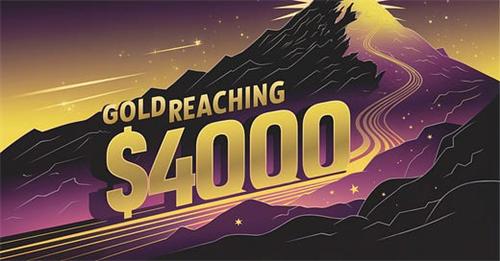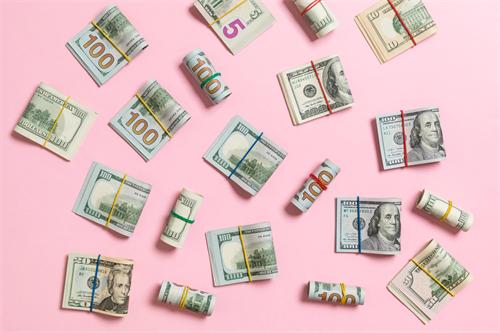Gold at $4,000? Geopolitical Uncertainty Fuels Safe-Haven Demand

In today’s climate of global economic uncertainty, gold—the age-old safe-haven asset—is experiencing an unprecedented surge. Since the beginning of 2025, gold prices have been climbing steadily, surprising many investors and prompting major Wall Street players like JPMorgan to revise their forecasts. According to JPMorgan’s latest report, gold could break through the historic $4,000 per ounce mark by the second quarter of 2026, with the annual average price reaching around $3,675.
This isn’t just speculation. As of April 2025, gold futures have already risen nearly 29% year-to-date, far outperforming the S&P 500 Index. Meanwhile, the world’s largest gold ETF—SPDR Gold Shares (GLD)—hit its highest price since launching in 2004, posting a year-to-date gain close to 30%. Investor demand for safe-haven assets has reached a fever pitch, and gold is the clear beneficiary.
Geopolitics + Weak Dollar = A Perfect Storm for Gold
Analysts at Bank of America identify three core drivers behind gold’s surge: geopolitical and trade tensions, weakening confidence in the U.S. dollar, and a surge in central bank gold buying. The latter, in particular, has accelerated at an eye-popping rate. Prior to 2022, global central banks purchased an average of just 17 tons of gold per month. After the Russia-Ukraine conflict erupted, that figure jumped to 22 tons—and by 2025, it has skyrocketed to 94 tons per month, a staggering 453% increase.
Against this backdrop, gold is no longer just a hedge—it’s becoming a strategic reserve asset. According to Goldman Sachs, if this buying pace continues, global central bank reserves could hit an all-time high within two years. Russia, one of the largest gold producers, is reportedly using third-party countries like Armenia to accelerate gold exports, helping to support its foreign reserves amid mounting economic pressure.
Economic Anxiety Boosts Gold: A Double Threat of Stagflation and Recession
Beyond geopolitics, economic uncertainty is fanning the flames of gold’s rise. Concerns about global economic slowdown and the persistent threat of stagflation are pushing investors toward assets with strong defensive characteristics. Gold, with its long-standing reputation as a recession hedge, is back in favor.
According to the World Gold Council, global investment demand for gold surged 170% year-over-year in Q1 2025. Gold ETFs alone saw inflows of 226 tons—marking the highest level since 2016. Retail demand in Asia, particularly China, has also stood out, with combined bar and coin demand rising 3% to 325 tons. Clearly, gold is once again a cornerstone of investor strategy across both institutional and retail markets.
Supply Constraints Amplify Gold’s Value Proposition
While demand for gold is soaring, supply-side dynamics are far less encouraging. Industry experts note that the world is running out of high-quality gold deposits. Discovering and developing new gold mines is a time-consuming and costly endeavor. Each year, new mine production adds only about 1% to the existing above-ground gold supply.
This scarcity strengthens gold’s price elasticity—meaning even minor shifts in demand can cause significant price movements. JPMorgan analyst Thomas points out that gold represents just 0.5% of global equity market value. So even a small reallocation of capital toward gold could trigger massive price swings. For central banks, higher gold prices mean they need to hold less of it to meet target reserve ratios, making it easier to diversify away from dollar-denominated assets.
From Dollar Dominance to Diversified Reserves: Gold’s Revaluation
Bank of America argues that this gold bull run is not only driven by traditional safe-haven flows but also reflects a larger shift in the global financial system: the decline of dollar dominance and the rise of multipolar reserve strategies. More and more central banks are moving to diversify their holdings, and gold—being independent of any single nation’s credit risk—is playing a key role in that transition.
Currently, gold accounts for roughly 10% of global foreign exchange reserves. That figure could rise to 30% in the coming years, driven by continued central bank accumulation and long-term concerns over the stability of fiat currencies—especially the U.S. dollar.
$4,000 Is Just a Projection—Rational Investing Still Matters
Although JPMorgan, Bank of America, and other institutions have issued bullish forecasts, projecting that the “$4,000 era” is near, individual investors should remain cautious. Gold’s future trajectory will ultimately depend on a complex mix of policy decisions, market sentiment, and global risk events. Chasing high prices without a clear risk management strategy could expose investors to volatile corrections.
While gold’s role as a safe-haven is now widely recognized, it’s crucial for investors to align their allocations with personal risk tolerance and avoid viewing gold as a “sure bet.” Whether or not gold actually hits $4,000, the bigger question is how one can build a resilient portfolio in a world defined by instability.
In short: Gold may not be a god, but in chaotic times, it is a faith.
Recommended for you



